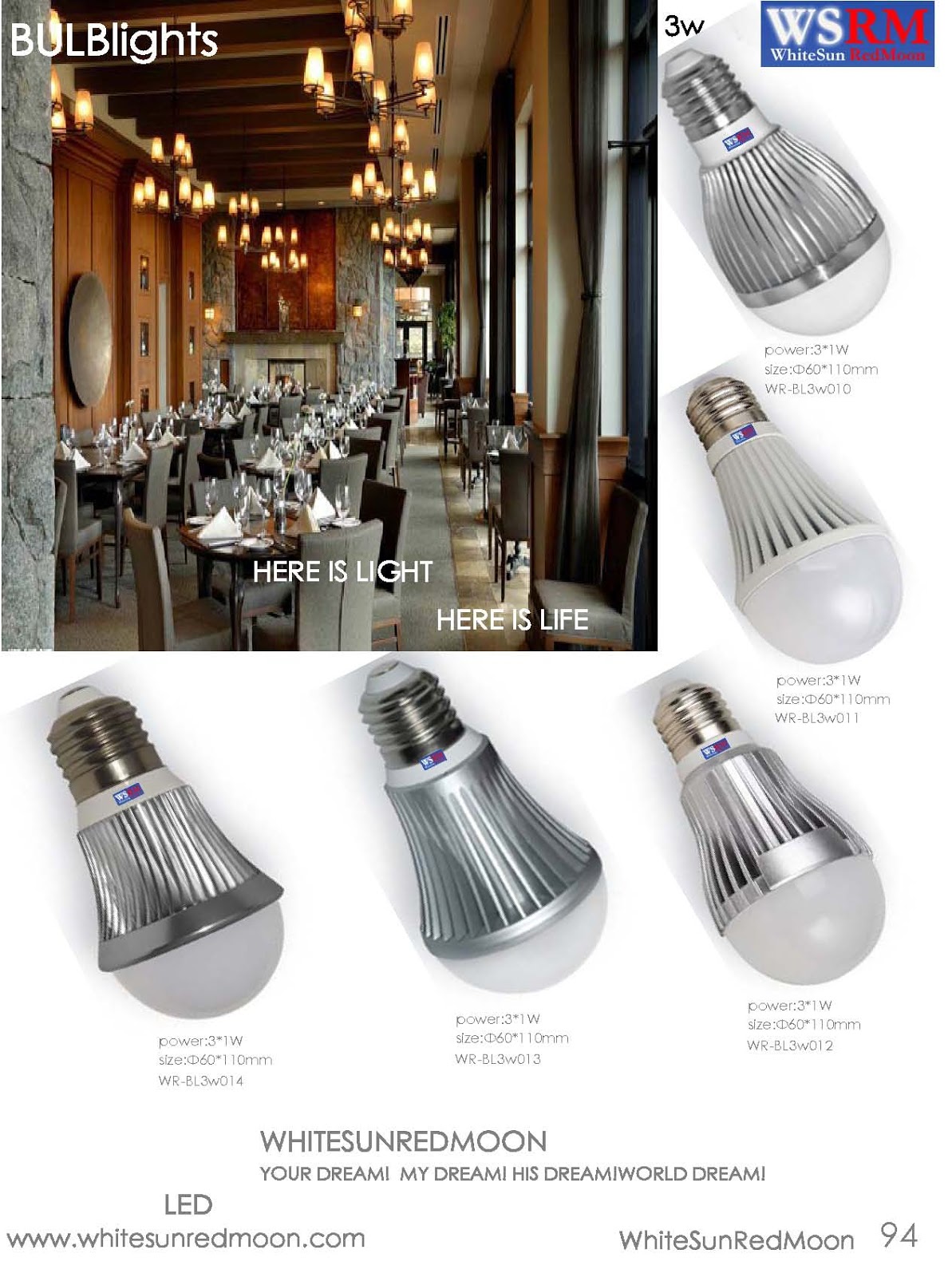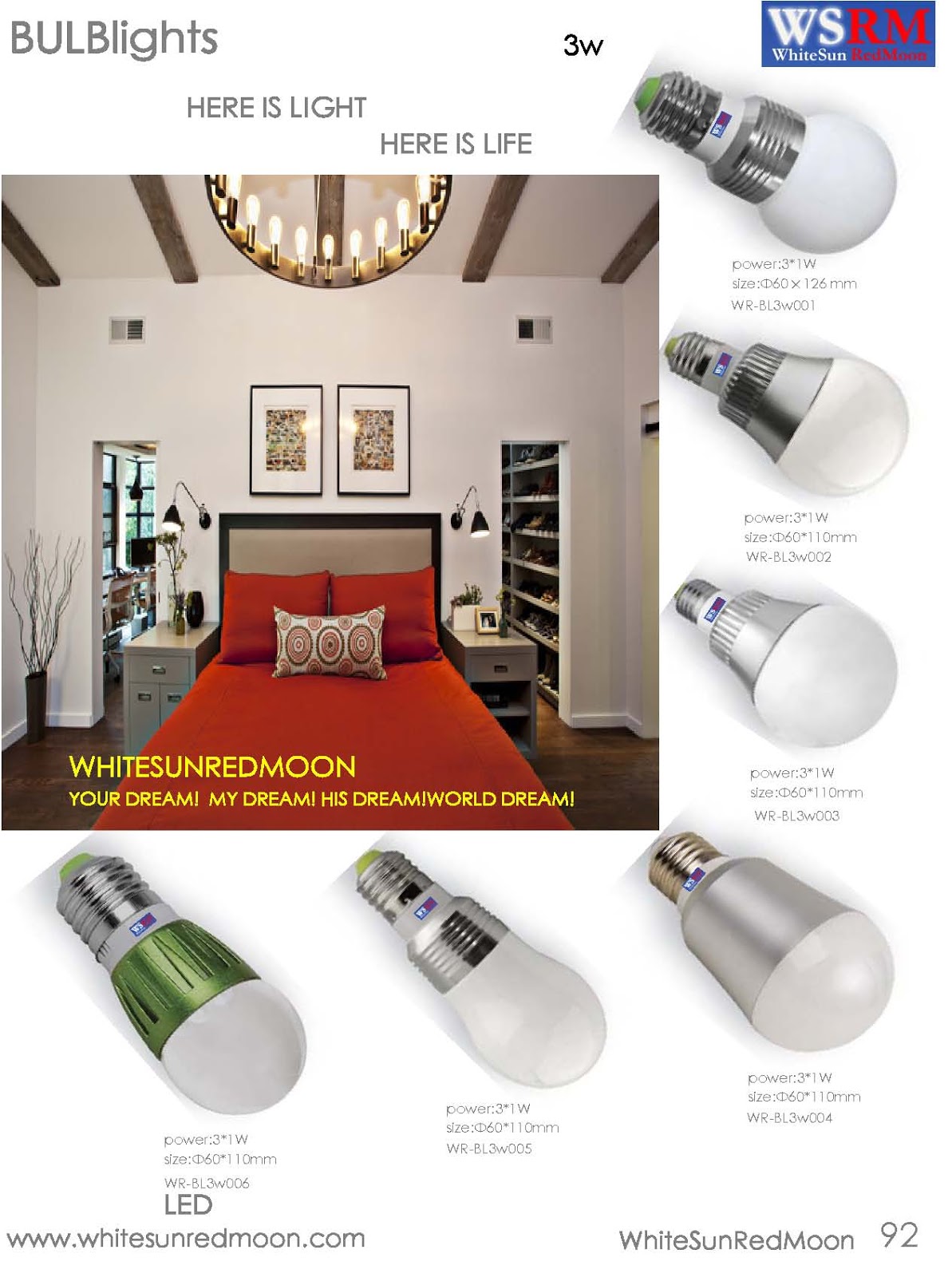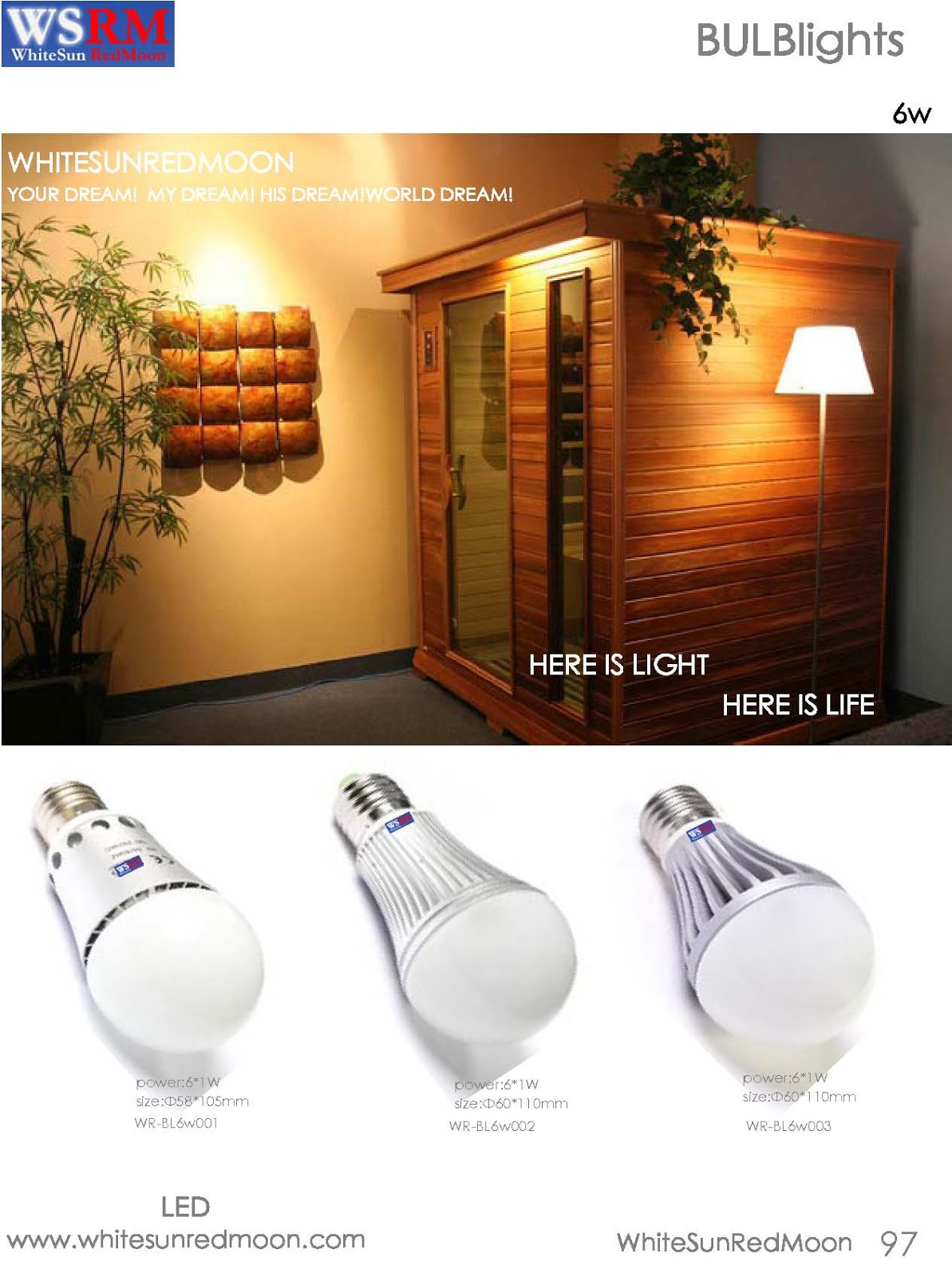Introduction
With incandescent light bulbs being phased out due to the The Energy Independence and Security Act of 2007, consumers have been subject to nothing short of one-sided and misleading hype about CFL lighting as being the safe “green” energy efficient lighting solution of the future. Educated consumers however, have discovered just the opposite. Either through direct experience or their own research on the subject, they are discovering that CFL lighting hazards, poor reliability and the environmental risks are not acceptable, and are looking for other lighting alternatives. One such alternative is LED lighting and it fortunately has come of age. LED light bulbs are the most energy efficient, reliable and long lasting lighting source currently available. Current LED bulbs last up to 50,000 hours and unlike CFL's their lives are not shortened by being turned on and off frequently as we normally do with a light bulb. LED’s are significantly more energy efficient than compact fluorescent lighting (CFL) and contain none of the toxic mercury vapor hazards of CFL's. No need to follow 12-step EPA hazardous material guidelines as when a CFL breaks, for example in your child’s bedroom.
LED Lighting: The New Home Appliance 50,000 hours. Think about that. At 50,000 hours of life and an average of say 3 hours of use per day, the LED is a lighting source with over 45 years of useful life! That’s why I call LED lighting the new home appliance. These light bulbs are no longer disposable commodities but a long lasting piece of lighting equipment in your home that will last for generations.
So what exactly is LED lighting? It’s an electronic solid state light source introduced in the 1960’s that uses Light Emitting Diodes to create light. The LED has seen significant improvements in electronics, optics and materials, all of which have contributed to the successful development of this lighting technology. Especially noticeable is the recent improvement in color rendition of the light provided by LED’s. Gone are the days of unacceptable bluish white colored light. Today’s LED’s have the natural warm white color of the incandescent bulb.
Let’s take a look at this great lighting technology.
With incandescent light bulbs being phased out due to the The Energy Independence and Security Act of 2007, consumers have been subject to nothing short of one-sided and misleading hype about CFL lighting as being the safe “green” energy efficient lighting solution of the future. Educated consumers however, have discovered just the opposite. Either through direct experience or their own research on the subject, they are discovering that CFL lighting hazards, poor reliability and the environmental risks are not acceptable, and are looking for other lighting alternatives. One such alternative is LED lighting and it fortunately has come of age. LED light bulbs are the most energy efficient, reliable and long lasting lighting source currently available. Current LED bulbs last up to 50,000 hours and unlike CFL's their lives are not shortened by being turned on and off frequently as we normally do with a light bulb. LED’s are significantly more energy efficient than compact fluorescent lighting (CFL) and contain none of the toxic mercury vapor hazards of CFL's. No need to follow 12-step EPA hazardous material guidelines as when a CFL breaks, for example in your child’s bedroom.
LED Lighting: The New Home Appliance 50,000 hours. Think about that. At 50,000 hours of life and an average of say 3 hours of use per day, the LED is a lighting source with over 45 years of useful life! That’s why I call LED lighting the new home appliance. These light bulbs are no longer disposable commodities but a long lasting piece of lighting equipment in your home that will last for generations.
So what exactly is LED lighting? It’s an electronic solid state light source introduced in the 1960’s that uses Light Emitting Diodes to create light. The LED has seen significant improvements in electronics, optics and materials, all of which have contributed to the successful development of this lighting technology. Especially noticeable is the recent improvement in color rendition of the light provided by LED’s. Gone are the days of unacceptable bluish white colored light. Today’s LED’s have the natural warm white color of the incandescent bulb.
Let’s take a look at this great lighting technology.
LED lighting is the most energy efficient lighting available
today and is about 80% more energy efficient than CFL's. LED's also provides the
longest bulb life at up to 50,000 hours. Let's take a look at how LED lighting
compares to CFL, Halogen and Incandescent technologies.
Next, let's expand the above list and summarize some the main characteristics of each lighting type, including wattage, life (hours), bulb cost and energy cost. Since an LED bulb sets the standard at 50,000 hours of life, let's use that as the timespan for the cost comparison.

LED Bulb Shape:
- Energy Efficiencies of Various Lighting Types
- 60 Watt Incandescent Bulb (630 lumens): 175 kWh/year
- 43 Watt Halogen-Incandescent Hybrid Bulb (750 lumens): 126 kWh/year
- 15 Watt CFL Bulb (900 lumens): 44 kWh/year
- 8.3 Watt LED Bulb
(800 lumens): 24 kWh/year
The following list shows the annual energy consumption of light bulbs (operating 8 hours per day) with light levels equivalent to a 60 watt incandescent bulb. The the low annual kWh energy consumption of LED lighting is clear.
Next, let's expand the above list and summarize some the main characteristics of each lighting type, including wattage, life (hours), bulb cost and energy cost. Since an LED bulb sets the standard at 50,000 hours of life, let's use that as the timespan for the cost comparison.
- LED Lighting
- 800 lumens (LED equivalent to 60 watt incandescent)
- Dimmable
- Color Temperature: Warm white (3000 Kelvin)
- Energy used: Actual 8.3 watts (11 watt nominal)
- Bulb Life: 50,000 hours (approx 45.7 years at 3 hours/day)
- Warranty: 36 months
- Bulb Cost: $15.00
- Cost of 1 Bulb for 50,000 hours of use: $15.00
- Energy Cost per 50,000 hours of use: 415 kWh @ $0.11/kWh = $45.65
- Total Cost of Bulb and Energy Use per 50,000 hours: $60.65
- CFL Lighting
- 900 lumens (CFL equivalent to 60 watt incandescent)
- Dimmable
- Color Temperature: White (2700 Kelvin)
- Energy Used: 15 watts
- Bulb Life: 6,000 hours (claimed life is always much less with frequent on/off switching, as much as 85% life loss, assume 25% life loss in analysis)
- Warranty: 12 months
- Bulb Cost: $15.00
- Cost of 11 Bulbs for 50,000 hours of use: $167.00
- Energy Cost per 50,000 hours of use: 750 kWh @ $0.11/kWh = $82.50
- Total Cost of Bulb and Energy Use per 50,000 hours: $249.00
- Halogen-Incandescent Hybrid Lighting
- 750 lumens (Halogen equivalent to 60 watt incandescent)
- Dimmable
- Color Temperature: Warm White (2900 Kelvin)
- Energy Used: 43 watts
- Bulb Life: 1,000 hours
- Warranty: 12 months
- Bulb Cost: $3.50
- Cost of 50 Bulbs for 50,000 hours of use: $175.00
- Energy Cost per 50,000 hours of use: 2,150 kWh @ $0.11/kWh = $236.50
- Total Cost of Bulb and Energy Use per 50,000 hours: $411.50
- Incandescent Lighting
- 630 lumens
- Dimmable
- Color Temperature: Warm White (2850 Kelvin)
- Energy Used: 60 watts
- Bulb Life: 1,000 hours
- Warranty: 12 months
- Bulb Cost: $0.50
- Cost of 50 Bulbs for 50,000 hours of use: $25.00
- Energy Cost per 50,000 hours of use: 3,000 kWh @ $0.11/kWh = $330.00
- Total Cost of Bulb and Energy Use per 50,000 hours: $355.00Incandescent
LED Bulb Shape:
Although LED lamps retain the basic shape of the
incandescent A19 bulb, they distribute light differently. The LED has its
electronics and light emitting diodes mounted in the bottom of the bulb. As a
result, LED bulbs naturally distribute light in a directional manner out the top
and side of the lens. In the photo above you see heat sink fins at the bottom of
the bulb and two different lens designs. One is a directional lens design and
the other is an omni-directional design.
With the directional LED lens light from tends to be distributed more
heavily to the top and sides of the bulb.
The omni-directional LED lens is a somewhat bulbous lens diffuser design that extends beyond the diameter of the base and allows light to radiate in all directions, similar to an incandescent bulb.The improved quality of LED light color is what has ultimately sold me on this lighting technology. They have now improved LED lamps to the point where color rendition is virtually that of an incandescent bulb and looks very normal. Gone are the days of "bluish-white" light color.
The omni-directional LED lens is a somewhat bulbous lens diffuser design that extends beyond the diameter of the base and allows light to radiate in all directions, similar to an incandescent bulb.The improved quality of LED light color is what has ultimately sold me on this lighting technology. They have now improved LED lamps to the point where color rendition is virtually that of an incandescent bulb and looks very normal. Gone are the days of "bluish-white" light color.
The improved quality of LED light color is what has
ultimately sold me on this lighting technology. They have now improved LED lamps
to the point where color rendition is virtually that of an incandescent bulb and
looks very normal. Gone are the days of "bluish-white" light color. In the photo above, you can see a direct comparison between an incandescent
bulb and a directional throw LED lamp (light from tends to be distributed more
heavily to the top and sides of the bulb) in the same light fixture. If you
wanted more downward light throw instead of the primarily upward throw of the
directional LED lamp shown, just use an omni-directional LED bulb. The color of
the LED lamp in the fixture however, is great and looks very natural.
In the photo above, you can see a direct comparison between an incandescent
bulb and a directional throw LED lamp (light from tends to be distributed more
heavily to the top and sides of the bulb) in the same light fixture. If you
wanted more downward light throw instead of the primarily upward throw of the
directional LED lamp shown, just use an omni-directional LED bulb. The color of
the LED lamp in the fixture however, is great and looks very natural.
WE HAVE A DREAM:BRING OUR LEDlights TO THE WORLDWIDE!
www.whitesunredmoon.com
http://zgledn.yglm.mobi/
SALES CONTACT
ITALY
Torino
39011redmoon1@myledonline.com
Rome
3906whitesun1@myledonline.com
SPAIN
Barcelona
3493redmoon1@myledonline.com
GERMANY
Berlin
4930whitesun1@myledonline.com
FRANCE
Paris
331redmoon1@myledonline.com
ENGLAND
London
4420whitesun1@myledonline.com
RUSSIA
Moscow
7499redmoon1@myledonline.com
FINLAND
Helsinki
3589whitesun1@myledonline.com
NORWAY
Oslo
47whitesun1@myledonline.com
AUSTRIA
Vienna
431whitesun1@myledonline.com
39011redmoon1@myledonline.com
Rome
3906whitesun1@myledonline.com
SPAIN
Barcelona
3493redmoon1@myledonline.com
GERMANY
Berlin
4930whitesun1@myledonline.com
FRANCE
Paris
331redmoon1@myledonline.com
ENGLAND
London
4420whitesun1@myledonline.com
RUSSIA
Moscow
7499redmoon1@myledonline.com
FINLAND
Helsinki
3589whitesun1@myledonline.com
NORWAY
Oslo
47whitesun1@myledonline.com
AUSTRIA
Vienna
431whitesun1@myledonline.com
NETHERLAND
Amsterdam
3120whitesun1@myledonline.com
SWITZERLAND
Zurich
4144whitesun1@myledonline.com
TURKEY
Istanbul
90216whitesun1@myledonline.com
BELGIUM
Brussels
322whitesun1@myledonline.com
SWEDEN
Stockholm
468whitesun1@myledonline.com
HUNGARY
Budapest
361whitesun1@myledonline.com
SCOTLAND
Glasgow
44141whitesun1@myledonline.com
ICELAND
Reykjavik
354whitesun1@myledonline.com
SWITZERLAND
Zurich
4144whitesun1@myledonline.com
TURKEY
Istanbul
90216whitesun1@myledonline.com
BELGIUM
Brussels
322whitesun1@myledonline.com
SWEDEN
Stockholm
468whitesun1@myledonline.com
HUNGARY
Budapest
361whitesun1@myledonline.com
SCOTLAND
Glasgow
44141whitesun1@myledonline.com
ICELAND
Reykjavik
354whitesun1@myledonline.com












No comments:
Post a Comment